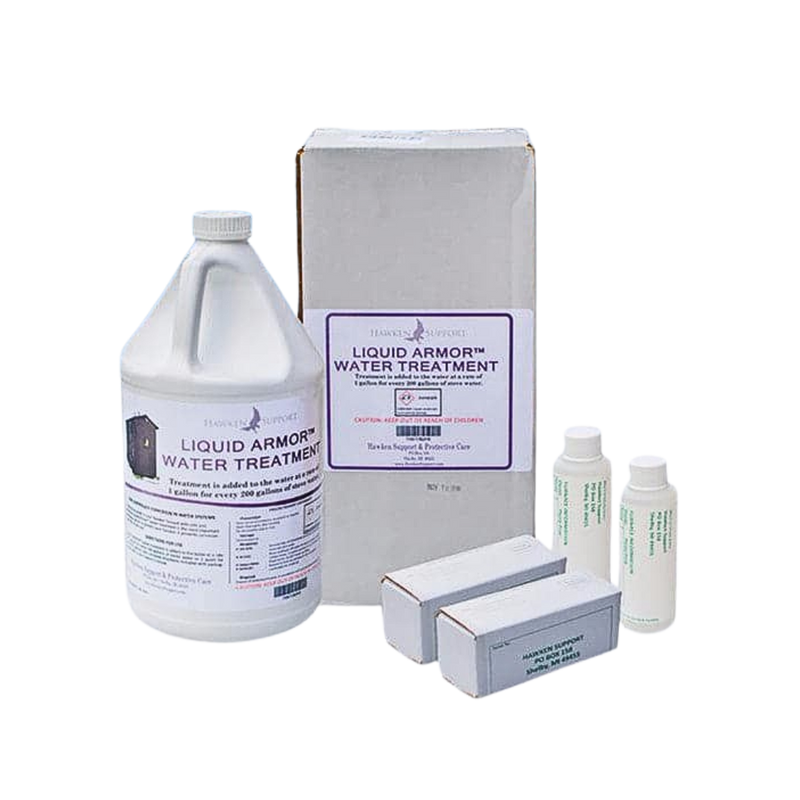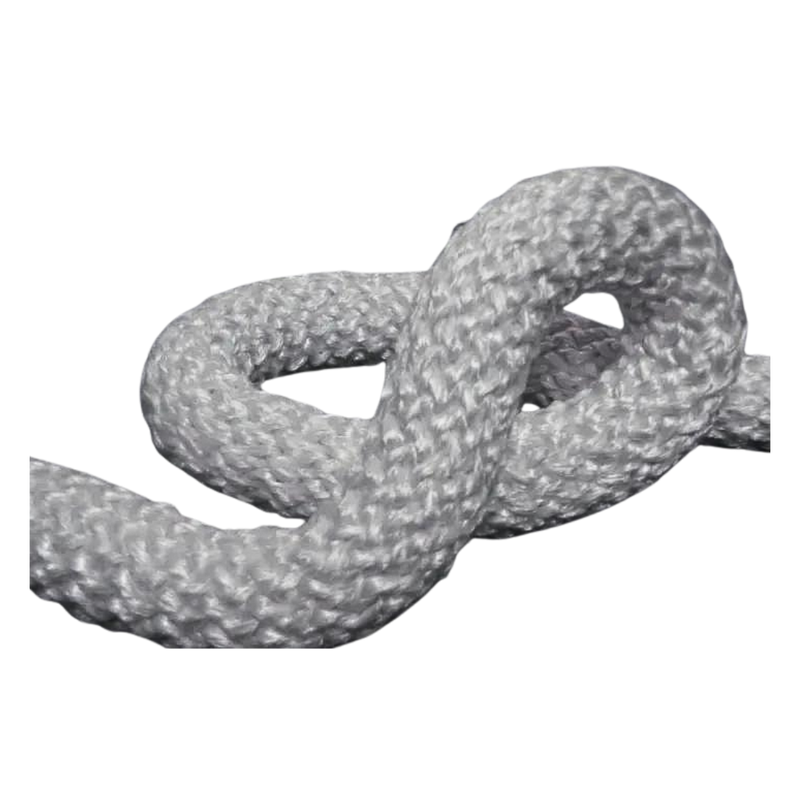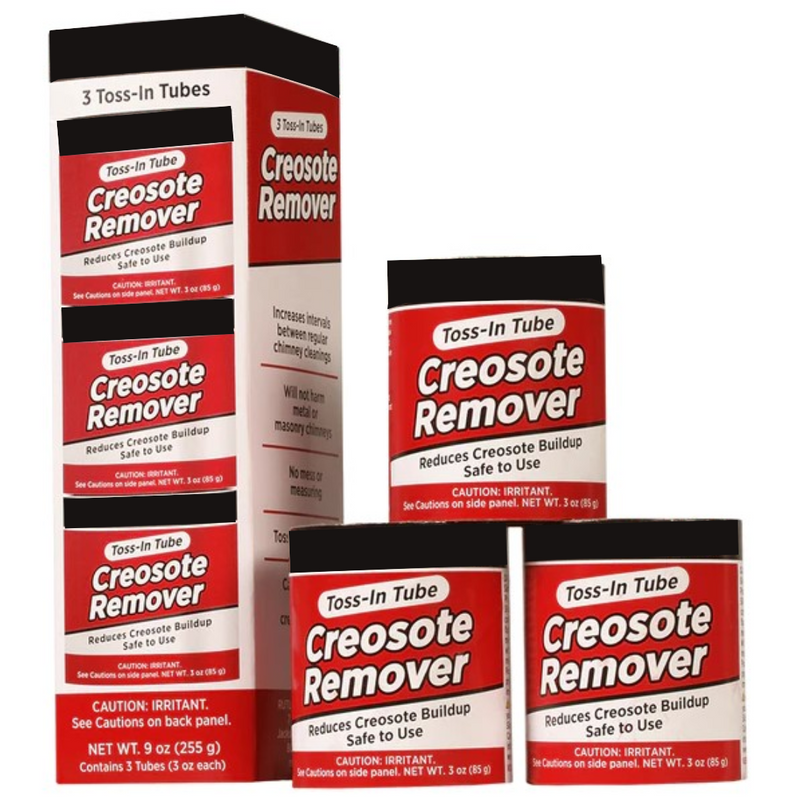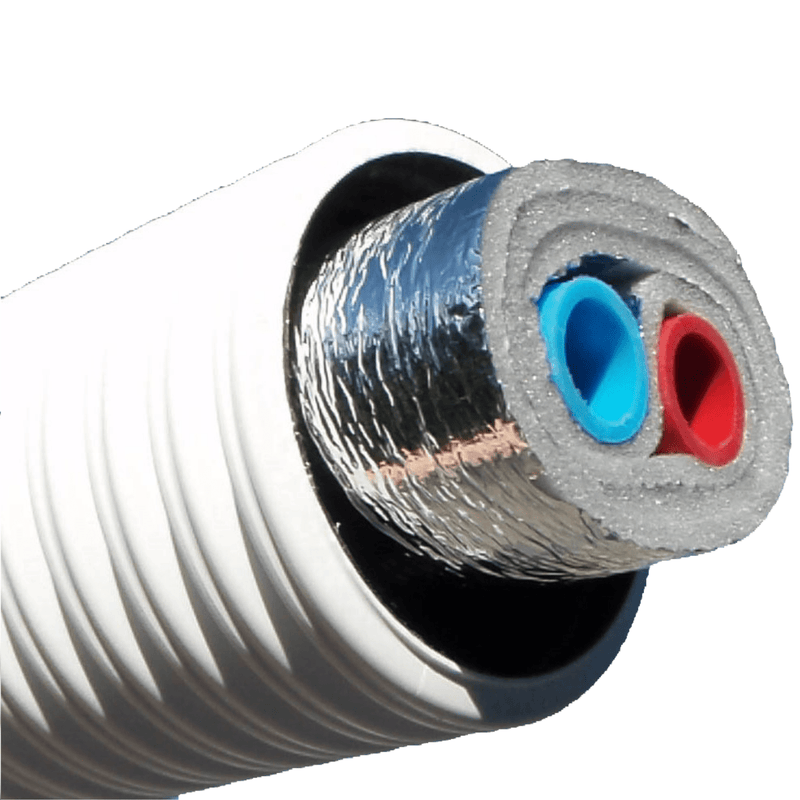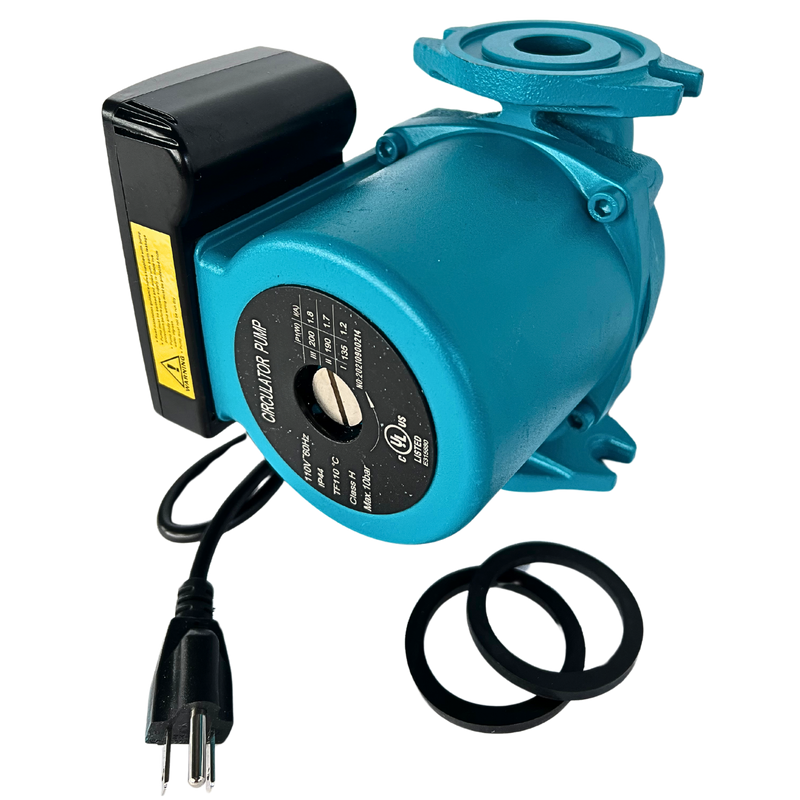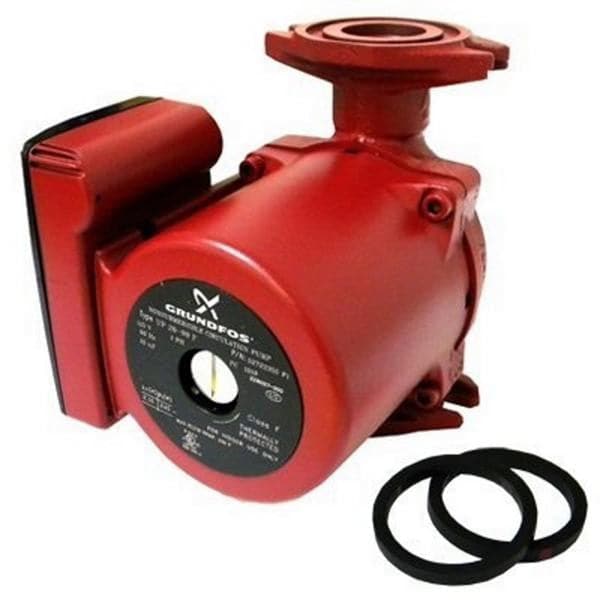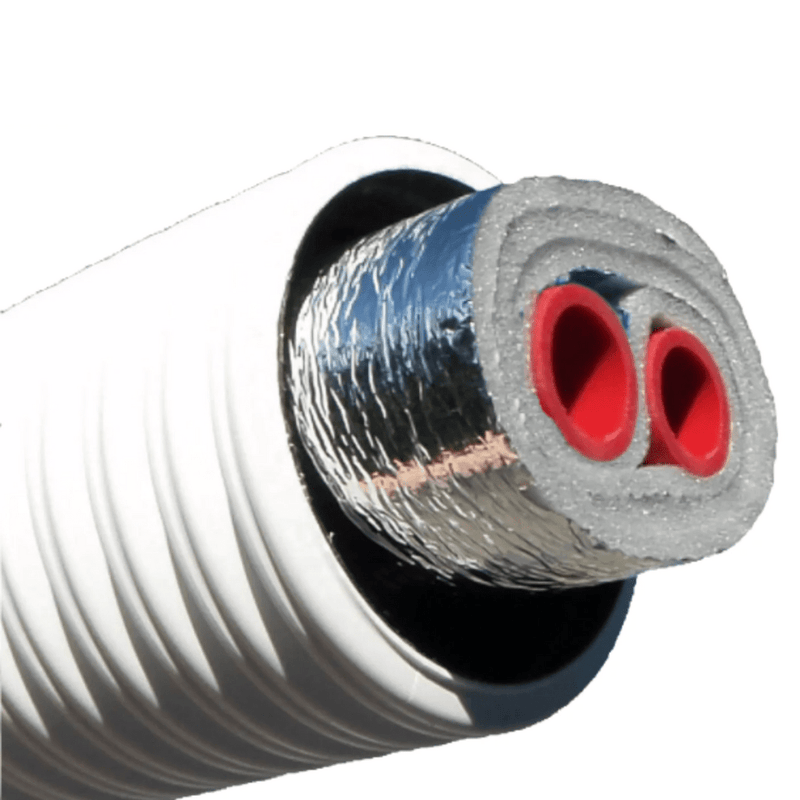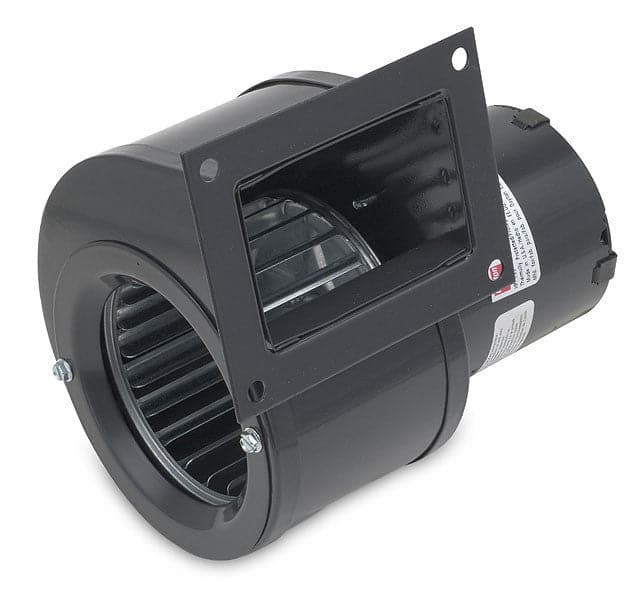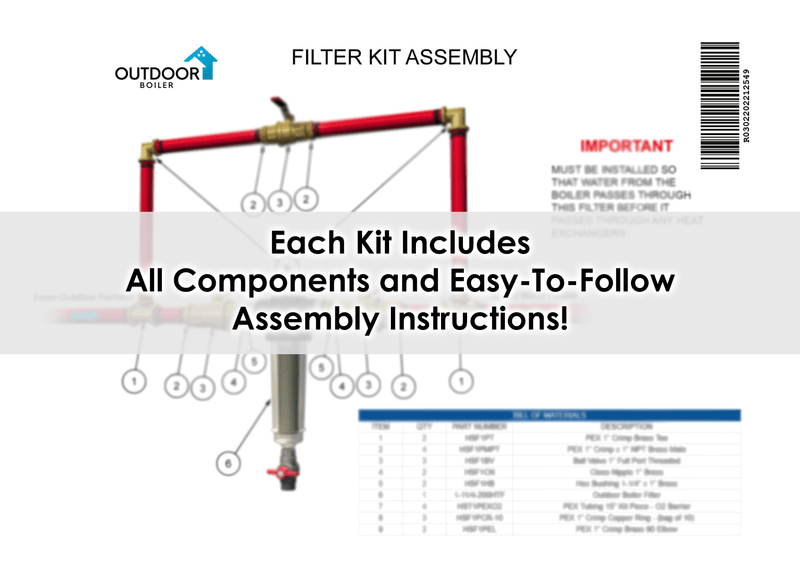GX Not Burning Well? Airflow Problems on Your Outdoor Furnace?
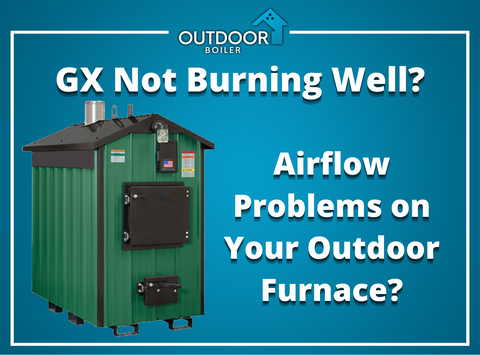
If your GX furnace seems to produce a lot of smoke around the door, or after the fire gets going and you close the door, the fire goes out, you have an airflow problem.
The solution for this is simple - just fix the airflow problem!
Obviously start by giving the furnace a good cleaning - clean the firebox, the secondary burn chamber, the vertical tubes, and the horizontal tubes.
Please make sure that you never use any Creosote sticks with the catalyst disk in place. Before putting the creosote stick on the fire, remove the catalyst and keep it out for 3 days after using a creosote stick, or at least five loads of wood.
Since there is an airflow problem, please envision the path of air traveling from the blower fan through the unit and out the chimney. Somewhere in that path, there is either a blockage, or there is a failed component.
- First, if the blower fan is not working, the air will never start its process. Verify this by opening the blower fan box cover and just put your hand in front of the fan blower opening (carefully).
(For GX10 models, remove the blower fan/solenoid assembly by unlatching the "suitcase clip" on the right side, and carefully remove the fan assembly which has the solenoid and damper plate attached. Check airflow, then replace.)
- Second, if the solenoids are not lifting the damper plates, the air cannot get into the tubes that carry the air to the firebox. With the fan box door open (or for GX10, with the fan assembly pulled out), have someone else actuate the Fan Switch in the front control box while you watch the operation of these solenoid(s). If they are not lifting the damper plate(s), then the solenoid either has a loose wire connection or needs to be replaced.
These are the two components that, if failed, will prevent proper operation - the fan and/or solenoid.
Now, if those components are functioning properly, then there is a blockage in airflow that must be cleaned out. Many times, GX owners think they have cleaned everything, but there is still some segment of the airflow channel that is blocked. Therefore, you must carefully check the entire path that air passes through the entire GX furnace:
- Blower fan pushes air into the rear airbox. MAKE SURE THIS GX15/30 BOX DOOR IS SEALED COMPLETELY. If the door to the rear airbox is not shut tightly and sealed properly, the air from the blower fan will not go into the firebox, but rather just into the rear of the furnace. (For GX10, make sure the blower fan/solenoid damper assembly is properly seated, and the "suitcase clip" is securely closed.)
- Next, the air has to go through those rear air tubes from the rear airbox to the firebox. Those tubes can get clogged (rarely, but possible). Run your brush through those tubes to clean them out.
GX10 air flows into the firebox through the vertical channel seen from the front door in the rear left of the firebox. That channel can be removed by lifting it out of place for cleaning. The need for this is rare and only applicable for very infrequent cleaning.
- Make sure the path of air from the rear tubes into the firebox channels is clear. Creosote can accumulate near those openings.
- Then make sure the path is clear and that air needs to pass through the firebrick into the secondary burn chamber. A brush will not fit through that channel, so you can gently use a long screwdriver, a stick, or some other thin tool.
- Make sure the secondary burn chamber is completely cleaned out using the long tool that works like a hoe. This chamber is accessed from the lower rear access door. (GX10 from the lower front door.)
- Now air passes up the vertical heat exchange tubes to the left upper rear chamber. Make sure those are clear.
- Next air passes through the catalyst disk if it is in place. Make sure it stays clean. Clean it only with water and make sure it is dry before putting it back into the furnace.
- Then air passes through the horizontal tubes. Make sure those are clear. Follow the cleaning procedure shown in the following videos:
Mindy Cleaning Furnace In Heels
Don Using the Sweet Flexible Rod Cleaning Tool
- Then from the rear right upper chamber, you can see how the exhaust exits the horizontal tubes and flows into the chimney, make sure that the pathway is clear.
- Finally confirm that your chimney is clean.
This cleaning/verification process will enable you to troubleshoot any airflow problems you may have with your GX outdoor wood burner!
Featured Product:
Boiler Pumps / Circulators
We have been selling pumps for use in hydronic heating for several decades and have probably sold more than 30,000 pumps. These are also called “Circulators” and that is the more accurate technical term, though most people just call them “Pumps”.
Regarding pumps, remember to have the correct size of the pump. We carry two standard sizes of pumps. The larger pump is the standard for installation and it is a 1/6 hp pump. This pump is strong and powerful and will handle most applications. While we are happy to provide an analysis of the pump size needed, more than 95 percent of our calculations show that the 1/6 hp pump is needed.
The smaller pump is only 1/25 hp and will work for only a few home installations if the distance between the boiler and building is less than 75 feet and there are only 2 bottlenecks (such as one filter, and one heat exchanger).
However, most home installations have three bottlenecks - a filter, a domestic hot water plate heat exchanger, and then a forced air heat exchanger. If you have three bottlenecks and/or more than 75 feet of underground pipe, stay with the larger 1/6 hp pump. Both pumps are available on the page below.
When do you need MORE power than only ONE of our strongest 1/6 hp pumps? Good question. If you are pushing water more than 150 feet and going through more than three bottlenecks, you may need more power...BUT there is a right way to get that power and many wrong ways!
DO NOT add a pump inside the building! This seems logical, but it does not work - this pump will get air locked and fail. Also, DO NOT think you can use a larger pump.
The PROPER way to get more power, is to "Daisy-Chain" together with two of our special 1/6 hp hydronic circulators. Two pumps are "Daisy-Chained" together by simply connecting them to one another so they boost one another and provide the flow strength needed.
And they must be located together at the back of the outdoor wood boiler so that they are always primed. Remember, their goal is to “circulate” the water through the entire loop, and this “Daisy-Chain” configuration is the only method recommended by the manufacturer and all hydronic experts. Learn more.
Frequently Asked Questions:
What size pump do I need for a boiler?
Almost all boiler applications require at least a 1/6 hp pump. Contact our technical support team for an exact calculation.
What is the best boiler circulator pump?
The best boiler circulator pump is our 1/6 hp circulator available at OutdoorBoiler.com!
How much does a circulator pump cost for a boiler?
Please see this page for boiler circulator pump prices.
How long do boiler circulator pumps last?
We at OutdoorBoiler.com started selling pumps in the early 2000s and almost every one of the more than 30,000 pumps we have designed and sold is still in operation. Only a few have been returned, but most of those were simply airlocked (installed incorrectly) and they were in perfect condition still.
How do I know if my boiler circulator pump is bad?
Read this article entitled “Is My Pump Working? I Need to Know!”
What does a circulator pump do on a boiler?
A circulator pump on a boiler pushes water in a big loop. The water is heated in the boiler, and the water releases that heat in other locations where the heat is needed. Water is the most efficient fluid for transferring heat from one location to another.













